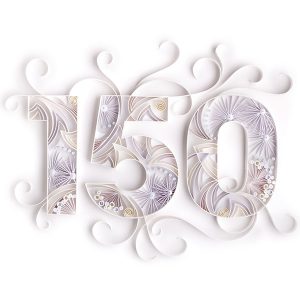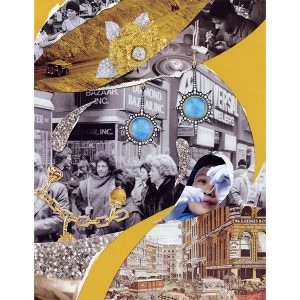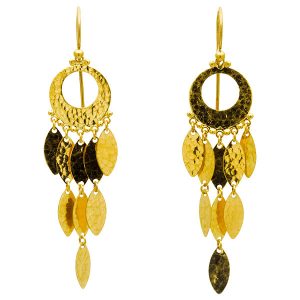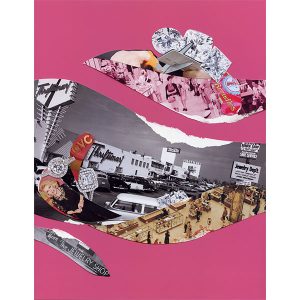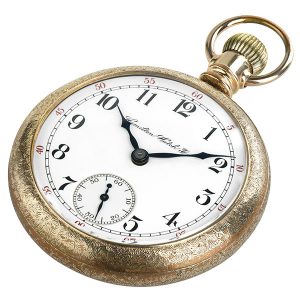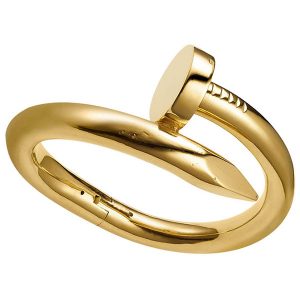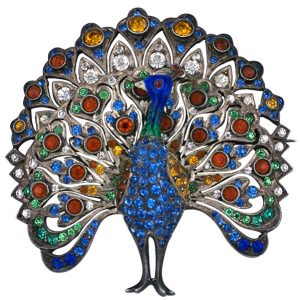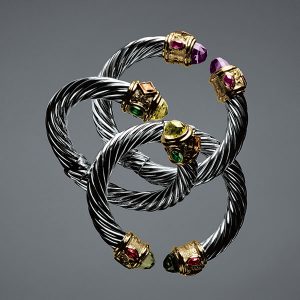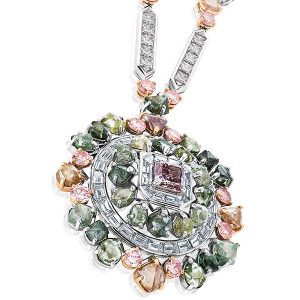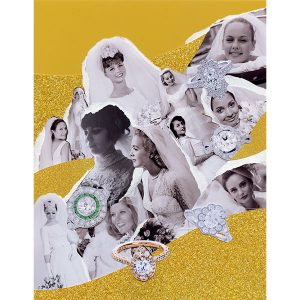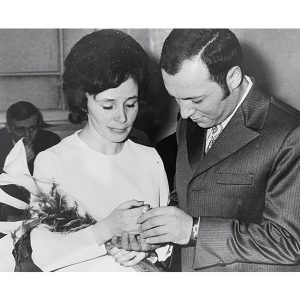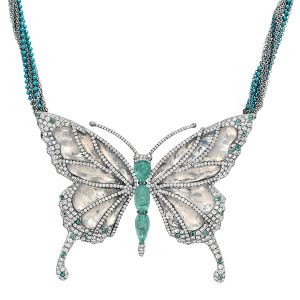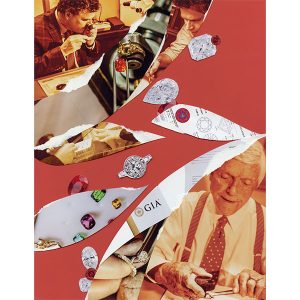Have a look at the entire September/October 2019 issue here.
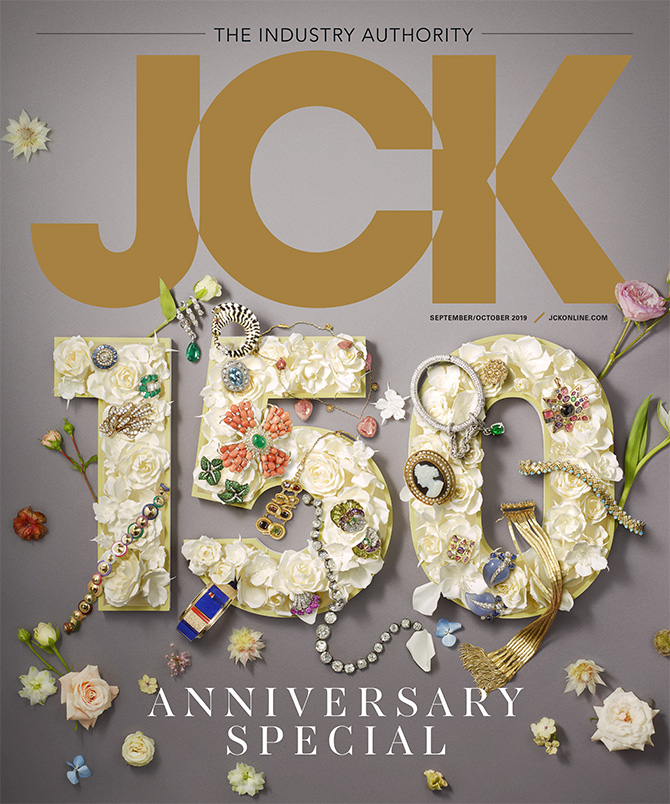
September–October 2019
A Chronicle of the American Jewelry and Watch Trade Since 1869
Behind the September–October 2019 150th Anniversary Cover Look
Cover photography by Kenji Toma Paper Artist: Jo Lynn Alcorn / Prop Stylist: Eriko Nagata To mark this momentous occasion, we gathered pieces spanning—you guessed it—150 years. Thanks to the designers, galleries, and estate jewelers who let us borrow some of their most precious gems. Daphne earrings in 18k fair-mined white gold with 18.55 cts.…
From the Editor, September–October 2019: A Look Back 150 Years
Seven minutes. That’s how long it takes to walk from JCK’s current office at One World Trade Center in lower Manhattan to its original location at 229 Broadway. We’ve traveled 150 years in time only to end up right where we started. For a jewelry magazine, coming full circle has the loveliest ring to it.…
From the Publisher: September-October 2019
150 years! In 2004, I was 15 years into my career as an ad sales exec and publisher in the consumer magazine world. At the time, I was overseeing consumer advertising sales for the entertainment trade Variety, so even though I was on the consumer side, I was employed by one of the nation’s biggest…
A Chronicle of the American Jewelry and Watch Trade Since 1869
When JCK was founded in July 1869 as the monthly American Horological Journal, with offices at 229 Broadway in New York City (now the location of the Woolworth Building), it was the first publication of its kind. An 1873 merger with The Jewelers’ Circular positioned it to acquire or vanquish a host of rival publications…
Eternal Affairs: Evergreen Quotes From the JCK Archives
More interesting—and surprising—than a catalog of all the changes to affect jewelry retail since 1869 is a catalog of things that haven’t changed. And there are plenty. On heavy rotation in our issues over the last century and a half, you’ll find all of the following: reporting about crime in all its iterations, from classic…
We Are the World: The Globalization of the Jewelry Industry
Walk the floor of any jewelry trade show and it’s clear: Our industry is sustained by important contributions from key countries and ethnic groups, from the diamond cutters of Mumbai to the manufacturers of Hong Kong. How did we get so global? It didn’t happen overnight. The American jewelry trade has always relied on an…
Once Upon a Time in America: The Immigrant-Built U.S. Jewelry Biz
The U.S. jewelry trade was built by an amalgam of immigrant groups whose legacies span multiple generations As we celebrate JCK’s 150th anniversary, we’re also looking back on the origins of the American jewelry trade. The discussion is impossible to have without acknowledging the unique roles that Jewish, Armenian, and Indian immigrants played in the…
Gold Standard: 150 Years of the Precious Metal’s Price
In JCK’s first 100 years, the metal’s price didn’t move much. But over the past 50, it’s been on something of a roller-coaster ride. For most of the 20th century, the price of gold bullion was set at $35 per ounce. In 1968, the London Gold Pool created a two-tiered system that let gold respond…
JCK…Why? What Were We Thinking With These 10 Covers?
From a fascist post-WWII flatware parade and a possibly possessed doll to kooky cartoons and questionable cover lines (“Can women outsell men in jewelry stores?”), here are 10 of our most head-scratching, craziest, and—let’s face it—ugliest covers. April 1951 December 1961 October 1966 August 1967 September 1975 September 1982 September 1984 September 1991 December 1992 September 2005
The Sky Is Falling: Chronicling a Century and a Half of Retail Panic
Long before jewelers despised e-tailers, they really hated department stores. And catalog showrooms. And even credit cards! When the American Horological Journal and The Jewelers’ Circular, the two earliest predecessors to JCK, debuted in 1869 and 1870, respectively, consumers could buy jewelry from one place and one place only: jewelry stores. Then came department stores—retail behemoths with…
Time Capsule: The Evolution of the Watch Trade and JCK’s Horological Roots
Intent on marketing and selling its products directly to consumers, today’s watch industry is nothing like its former 19th-century self JCK’s earliest forerunner, a magazine called the American Horological Journal, is not what most people would consider an easy read. Founded in July 1869, the monthly publication featured 13 articles in its debut issue, spread…
Sell, Sell, Sell! 150 Years of Advertising in JCK
Almost as much fun as reading past issues of JCK? Looking at vintage ads. Here are just a few of our favorites, pushing everything from paper and place settings to pearls and Pac-Man jewelry. 1870s 1880s 1890s 1900s 1910s 1920s 1930s 1940s 1950s 1960s 1970s 1980s 1990s 2000s 2010s
Enough Said: On Big Brands and Legendary Retailers Over the Years
We combed through years of articles for quotes about Cartier; Tiffany & Co.; Gearys; Ben Bridge; and Shreve, Crump & Low As the publication of record for the jewelry industry since 1869, JCK has chronicled the history and milestones of America’s most celebrated retailers, including brands still thriving in 2019. We poked through the archives…
The Elements of Style: A Decade-by-Decade Account of Fashion
Throughout JCK’s 150 years, hundreds of jewelry trends have cycled in and out of style. We didn’t cover them all—there were periods, particularly in the early years, when design was hardly discussed, let alone dissected—but most major jewelry eras were immortalized in our pages. And because there are few more clear-cut ways to digest a…
The Long Lexicon: Defining Fashion, Bridge, and Costume Jewelry
The jeweler’s role has certainly changed over the past 150 years, not just in fine-tuning a store’s merchandise mix, but in defining—and redefining—how merchandise is classified and understood by consumers. Here, we examine the oft-changing—and ever-confusing—lexicon for costume/fashion, bridge, demi-fine, and fine jewelry, and highlight the ways JCK has helped jewelers navigate the shifting boundaries…
The Dawn of the Independent Jewelry Designer
In the early 1980s, only a handful of years after establishing his first jewelry brand, Flaircraft, Jose Hess made the decision to start stamping his own name on the backs of his designs. The switch had been a long time coming, recalls the German-born designer, whose family fled to Colombia to escape the Nazis. “I…
The 5 Biggest Diamond Developments of the Past 150 Years
The diamond industry is so multifaceted that we could fill a whole issue with developments and innovations. For now, we’ll limit ourselves to the 5 biggest throughout JCK’s history. 1888: De Beers Is Formed In 1888, one year after JCK predecessor The Keystone Weekly was founded, there was an even more notable introduction: De Beers…
The Man-Made’s Tale: Lab-Grown Diamond Panic Is Nothing New
Lab-grown diamonds have been a topic of concern for the industry for decades. We chart the paranoia. How long has the diamond industry been worried about lab-grown diamonds posing a threat to the natural industry? As JCK’s archives show, a long, long time. 1880 Dealers in diamonds are frequently asked by their customers if…
American Weddings: The Evolution of the Wedding Jewelry Industry
Since the mid-20th century, selling diamond rings to brides has formed the backbone of the jewelry business—and JCK has counseled retailers every step of the way The ancient Egyptians were the first to use a ring as part of the marriage ceremony or contract. In Egyptian hieroglyphics, a circle or circular mark is used to…
Put a Ring on It: Engagement Rings Through the Ages
The most revealing thing we discovered when we surveyed the reigning engagement ring styles of the past 150 years? How many would be coveted—and considered marketable—today. Victorian The discovery of diamonds in South Africa in 1867 floods the market with rose-, old mine–, and old European–cut stones. Snake motifs—popularized by Queen Victoria herself—are de…
The 10 Most Important Gemstone Discoveries of the Past 150 Years
Over the course of JCK’s century and a half–long history, the gem trade has blossomed into a $10 billion business. We chronicle the most important developments in a world gone mad for hue. Tucson When mineral dealers began gravitating to this Arizona desert city in the 1950s, they couldn’t have known that within decades,…
The Evolution of the Pearl Trade From Kokichi Mikimoto to Today
JCK has documented the evolution of the pearl trade in America since the late 1800s. From Kokichi Mikimoto’s cultured pearl invention in 1893 to the impact of today’s climate-change crisis, we track the industry’s progress. “The pearl is still the queen of gems. All really fine gems of the water find a more or less…
The S Word: How Gemstones Moved Beyond Semiprecious
As retailers and designers gravitate toward their variety and accessibility, so-called semiprecious stones have moved from supporting players to starring roles For centuries, conventional wisdom when it came to the pecking order of jewels put diamonds and the “Big Three”—ruby, sapphire, and emerald—at the uncontested top of the heap. The remaining multitudes fell into the…
The Paper Trail: How Certificates Changed Diamond and Gem Buying
Three top retailers reveal how certificates changed the way consumers buy diamonds and gemstones The Information Age has unfolded across generations of JCK readers, and in few product categories has that proved as consequential as in gems. Over the decades, customers have evolved from buying diamonds and colored stones essentially on blind faith to researching…
The 10 Biggest Technological Innovations in Jewelry History
Over the past 150 years, which technological innovations have most improved the jewelry business? We vote for these 10. Although human beings have adorned themselves with jewelry for millennia, the ways technology has shaped the modern jewelry business are readily apparent in the pages of 150 years’ worth of JCK. Technology we now take for…
What Will the Jewelry Industry Be Like in the Year 2069?
As we look back over the past 150 years of JCK, it’s easy to indulge our nostalgia for the way things were. But equally tempting is the urge to look forward and indulge our imagination about the way things will be. Fifty years from now seemed like a good place to land. Rather than grapple…
By the Numbers: Breaking Down 150 Years of JCK
28 Pages in the debut American Horological Journal. Just a few of the topics covered: “English Opinion of American Watch Manufacture,” “Pinions,” and “Watch and Chronometer Jewelling.” A lapel watch by Tiffany & Co.’s Paulding Farnham, inspired by a twig from a blossoming apple tree 548 Pages in the Feb. 5, 1919, Jewelers’ Circular-Weekly—our biggest…
